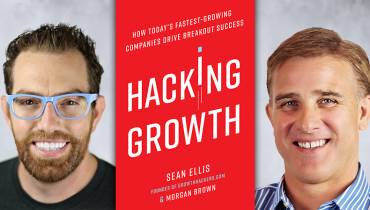13 Must-Dos for Writing Truly Compelling Website Copy

Writing copy for the web is a tricky business - perhaps even one of the most challenging jobs out there. Suffice to say, almost anybody can string together a group of sentences for a landing page or a ‘Call to Action.’ However, writing compelling and creative web copy that converts visitors to customers requires creativity, skill and patience to put together something that drives conversions on a website.
If you feel the language or context used on your site may be diminishing your conversion rates, your concerns are probably justified. Internet users are very impatient and will leave a web page if they don’t understand what it’s about. It doesn’t end there. About 44 percent of them will share their bad experience with friends and colleagues, which hurts your conversions further.
Proven Tips to Boost Web Copy Conversion Rates
You don’t want to lose potential customers because your web copy is not inspiring enough. The following tips are proven techniques that have produced positive results for many websites.
Apply at least seven to eight of these tips to your website and watch the difference they make to your conversion rates!
1. Know your audience
It is impossible to craft compelling content, without knowing the people you are writing for. A simple technique is to create a ‘buyer’ persona. You don’t have to be selling products to do this. You want the audience to buy your idea or message. A buyer persona allows you to imagine what they want. Therefore, immerse yourself in their mind and try to think like them. This way, you produce content that not only appeals to your audience, but also inspires action.
2. Choose a fitting medium
A medium is the channel you use to reach and capture your audience. Many a good copy has failed because they were presented via the wrong medium. For example, the kind of content you create for Facebook will surely differ from the one you put together for Twitter or Instagram. This is because online media is audience-specific. This follows on from the first tip: know your audiences and the medium they prefer. Then, write accordingly.
3. Work in magnetic headlines
Since the beginning of print, headlines have played an important role in captivating the audience. It is no different for digital content. Want to create clickable headlines?
Use the following tips:
- Juxtapose figures and words together (“7 Simple Ways to Prepare for Spring”)
- Use alliteration to make it witty (“4 Fabulous Food Festivals This February”)
- Add some power words for effect (“12 Ways to Turbocharge your Tweets”)
When done correctly, headlines can do more than introduce your content.
4. Use the power of exclusivity
People love to feel special and part of an ‘in-crowd’. Write content as though they are in an exclusive club and watch your engagement rates soar. I once received a marketing email which featured the subject, “Dear James, you have been specially invited to…” Naturally, this piqued my attention and I opened the mail to read further. Creating the idea of exclusivity draws people in. Use your persuasive content to seal the deal.
5. Write like you speak
Digital content works best when it’s conversational, especially when you are writing a blog post. The internet already provides an anonymous quality to your content, so the least you can do is to make it sound human. Even professional brands don’t have to sound business-like all the time. Throw in some humor, share a personal experience and add some personality to your content.
6. Use analogies and metaphors
Writing online copy can feel like communicating with a faceless audience. Sometimes, you may consider how readers react to your content. Use analogies and metaphors to engage them. Also, embed emoticons to allow them to respond to the way your post made them feel. BuzzFeed uses this strategy. Ask questions too. Did you notice the metaphor in this point?
7. Avoid weasel words
Only writers who are unsure of their message use these words to weasel their way out. What are weasel words? They are words certain brands use to maintain plausible deniability when they can’t guarantee something.
“Reduce itchy scalp with Comfy Cool®…” (meaning it won’t cure it)
Weasel words are easy to spot, and they don’t say much for your brand. Be sure of what you can achieve and write convincing copy around it.
8. Use psychology of urgency to inspire action
Writing compelling, emotional content is good, but sometimes your audience needs an extra push to convert quickly. When people are guaranteed something, they don’t hurry to get it. However, when they feel they could lose out, they act immediately. For example:
“10 Aqua-sprint Running Shoes Bought Today, 3 More to Go,” will work better than “Buy Aqua-Sprint Running Shoes.”
A sense of urgency drives customers to act quickly.
9. Use ‘Call-to-Action’ buttons effectively
Some people may argue that this is more of a design feature than a copy one, but CTA buttons do have their own copy. Insert a strong message in your CTA button, telling readers what will happen when they click on it. CTA buttons also work best when they contrast the background. A good example is the ‘Secure your Seat’ CTA button on the Umbrellar.com homepage.

10. Tell a story
There is something about stories that humans naturally find interesting. Science has proved that when people hear “Once upon a time…,” a part of the brain suddenly lights up. You don’t need to write that in all your content, but there are smart ways to cue a story into your message. If your go back to your previous posts, you will probably discover that the most popular ones were story-led.
11. Use long copy for certainty
There are people who will argue that internet readers are impatient and will skip lengthy content. They are not wrong, but people will stick with relevant content that interests them. If you were concerned about what mattress was best for your toddler, you would probably read all 2000 words on a post about “Safe Mattresses for Children”. It all depends on value. Besides allowing you to overcome customers’ objections, lengthy content also boosts your site’s SEO quality.
12. Tell your readers why
One of the most powerful words in marketing is ‘Because’. Why? Because people always want to know why things are. It is psychological. Why is your brand the one? What makes you better than 100 businesses doing the same thing? Don’t hesitate to explain in a convincing way. Avoid leaving your copy hanging. Tell them in creatively different ways why you. Give your audience a reason to choose.
13. Always test your content
This final point is something many online brands fail to do. Once their content is ready, they simply click to publish. Every now and then, test the performance of your copy. For instance, before settling on a ‘Call-to-Action’ text or button, find out which one will do better in front of potential customers.
You can use A/B Testing method or Multivariate Testing. Testing your content increases your chances of getting great conversion rates. It also allows you to evaluate copy for future posts.
Ready to start crafting creative content? Follow these tips and check the results after a few weeks. I guarantee you will be impressed.
Read Also: 6 Ideas for Writing Blog Posts that Act Like Sales Copy.
Related: How to Write a Memorable and Impactful Slogan or Tagline.

 James Cummings is an experienced senior manager who runs a UK writing company
James Cummings is an experienced senior manager who runs a UK writing company 

















![How Home Exchange Booking Habits Changed During the Pandemic [node:title]](/sites/default/files/styles/video_thumbnail_bottom/public/paandemic-home-swapping--womanaa-mask-by-the-window.jpg?itok=MR3ny7Sy)